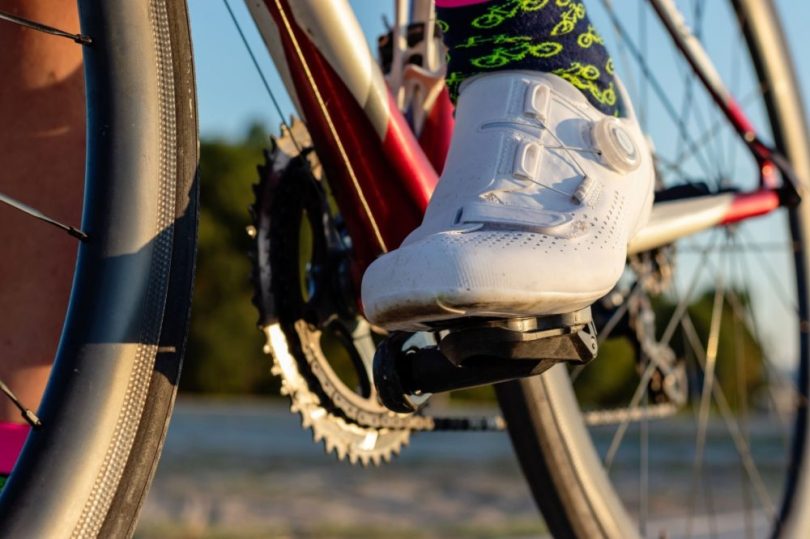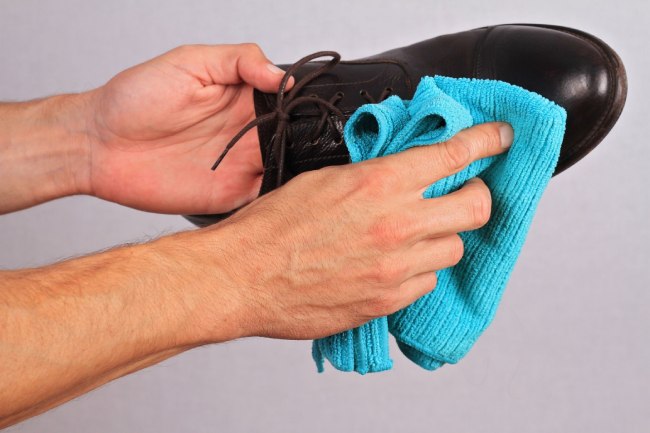“If it ain’t broke, don’t fix it” – this rule applies to the answer of your question – how long do cycling shoes last?
The lifespan of a pair of cycling shoes depends on several factors, including the type and frequency of riding, the materials used in its construction, and the level of care and maintenance given to the shoes.
On average, high-quality cycling shoes can last 5 to 7 years with regular use. But for competitive riders who train and race frequently, a pair may last only a season or two.
When to Replace Your Cycling Shoes?
Most bike enthusiasts usually replace their old shoes when one or more of these things happen:
- Some parts are falling apart, such as broken closure systems, cracked soles, rubber soles peeling off, soles getting separated from uppers, torn uppers, etc. (remember that the boas, ratchets, and laces are easily replaceable).
- They have become so smelly that even treating them won’t work anymore
- A new pair with better features and technology (e.g. lighter and stiffer) has caught your eyes and you need it to help improve your performance
Instead of throwing the old shoes into the trash can, you can keep them as spares, especially when the new pair is wet or something.
Understanding the Wear and Tear of Cycling Shoes
Sole
The sole determines the level of power transfer from the rider’s foot to the pedal, and also provides grip and stability on the bike. Soles made of carbon fiber or nylon are generally more durable than those made of plastic, but they are also expensive.
Uppers
The material and design of the upper have a significant impact on the fit, comfort, and performance of a cycling shoe. Some common materials are leather, synthetic leather, mesh, and textile.
Synthetic leather and mesh uppers are usually more durable than traditional leather uppers. However, they are not as breathable as leather and may not be as comfortable in hot weather.
The design of the upper and the quality of the stitching and construction also play a role in its durability. A shoe with reinforced toe and heel areas, as well as double or triple stitching in high-stress areas, is generally more durable than those with a simpler design.
Closure
The closure system of a cycling shoe is also an important aspect of the upper. Many cycling shoes have a combination of laces, straps, or ratchets to provide a secure and adjustable fit.
They can become stretched or lose tension over time, resulting in a poor fit and reduced performance.
Mechanical closure systems, such as ratchets and boa dials, are generally more durable than traditional laces, as they have fewer moving parts and are less prone to breaking.
Laces, while not as durable as mechanical closure systems, can still provide a secure fit and last a long time if they are made of high-quality materials and maintained properly.
Durability Based on the Materials
Cycling shoes are commonly made of a combination of materials, including:
- Synthetic leather or mesh uppers for breathability and durability
- Carbon fiber or nylon soles for stiffness and power transfer to the pedals
- Foam padding for comfort
- Velcro or Boa lacing systems for a secure fit.
High-end racing shoes tend to use lighter and stiffer materials, while recreational shoes may prioritize comfort and durability.
Entry-level cycling shoes are often made of synthetic materials that are less durable than high-end shoes. These shoes may need to be replaced more frequently than high-end shoes, which are made from more durable materials such as carbon fiber or leather.
Maintenance of the Cycling Shoes
The level of care and maintenance given to your shoes can also affect their lifespan. A well-maintained pair of cycling shoes that has been used for several years can still provide good performance, while a poorly maintained pair of cycling shoes that has only been used for a few months may need to be replaced.
Ultimately, the lifespan of cycling shoes will depend on the specific use cases and habits of the rider. It is important to be aware of the signs of wear and tear, and to replace them when they no longer provide the maximum level of performance and comfort.
Tips for Maintaining Cycling Shoes
Here are some tips to help add more service years to your cycling shoes:
- Clean and dry your shoes after each ride
After every ride, remove dirt and mud from the soles and uppers using a soft brush or cloth. For tough stains, you can use a damp cloth and mild soap. Let them dry completely before you store.
- Check the cleats regularly
Cleats are small metal or plastic plates attached to the bottom of cycling shoes that connect to the pedals. They can become worn over time, reducing power transfer and causing discomfort. Replace as soon as they become worn.
- Inspect the uppers for signs of wear and tear
The signs of wear and tear on the uppers can include:
- Scuffs and scratches on the surface
- Frayed or torn fabric
- Deformed or stretched shape
- Cracks or peels on the material
- Worn out or thinned out material
If you notice any of these signs, it may be time to replace your cycling shoes to ensure the proper fit and support for your feet.
- Store in a dry place
Cycling shoes can be stored in a variety of places, but the ideal location should be:
- Dry: Avoid storing shoes in a damp or humid environment, which can promote the growth of bacteria and cause odor.
- Cool: Extreme heat can cause the material to warp or discolor.
- Out of direct sunlight: UV rays can fade or damage the shoes over time.
- Away from direct contact with sharp or rough objects: This can prevent scratches, scuffs, or tears on the material.
- In a well-ventilated area: This can help prevent the buildup of odor or bacteria.
Some options for storing cycling shoes include a closet, a shoe rack, or a storage bin.
- Use shoe trees to keep the shoes in shape
You can also consider using shoe trees or shoe inserts to help maintain the shape of the shoes while in storage. This can help prevent creasing and warping.
- Regularly check the closures
Closures like straps and buckles can become stretched or lose tension over time, resulting in a poor fit and reduced performance. Regularly inspecting and adjusting the closures can help prolong the life of the shoes.
- Use a waterproofing spray
Waterproofing sprays are a great option to avoid chafing and discomfort, and protect your shoes from water and dirt. They help keep the shoes dry, even in wet conditions, which ensures a better grip and extends the life of the shoes.
FAQs
1. Should my cycling shoes be tight or loose?
Ans. Although stiff soles and snug-fit shoes help in stabilizing the foot, they shouldn’t be too tight. In other words, there should be a little gap between your toes and the front of the shoes.
2. Do cycling shoes break in?
Ans. Yes, cycling shoes typically do break in over time. As you use them, the material will mold to your feet, and the shoes will become more comfortable. It is recommended to avoid using brand-new cycling shoes on long rides immediately after they are bought.
3. How long does it take to get used to new cycling shoes?
Ans. Breaking in new cycling shoes typically takes several rides, anywhere from a few days to a couple of weeks. The time can vary depending on the material, the fit, and how often you ride.
To speed up the process, you can wear thick socks and gradually increase the length of your rides. Additionally, you can apply a leather conditioner to soften them up and make them more comfortable.
4. Why do my toes hurt after wearing cycling shoes?
Ans. This can be caused by several factors, including:
- Poor fit: If your shoes are too tight, too loose, or the wrong size, your toes can rub against the front of the shoe causing pain.
- Numbness: Numbness in your toes can result from pressure on the nerves or blood vessels, leading to pain.
- Cleat position: Cleats that are positioned too far forward or too far back can cause pressure on your toes while riding.
- Stiff soles: If the soles of your shoes are too stiff, they can transfer road shock directly to your feet, leading to discomfort and pain.
- Foot deformities: If you have foot deformities such as bunions or hammer toes, cycling shoes that do not provide adequate space for these can cause discomfort and pain.
5. How to keep my cycling shoes free from odor?
Ans. Place the shoes in the freezer for one to two days and add dome baking soda inside. The low temperature in the freezer will help to reduce or eliminate bacteria, while the baking soda will help absorb any unpleasant odors.









